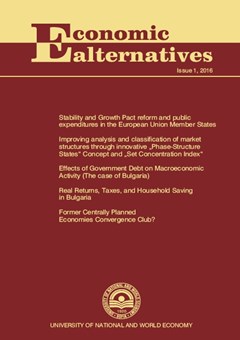Is There a Club of Former Centrally Planned Economies, Given the Empirical Evidence for Their Growth and Convergence Patterns?
Author: Boris Petkov
Abstract
Our analysis provides evidence in support of the following assumptions: i) poorer Central and Eastern Europe (CEE) and Caucasus and Central Asia (CCA) countries are growing faster than relatively richer ones; hence there is absolute ? convergence; ii) when control variables are included into our model, larger (negative) ? coefficients are displayed, supporting the phenomenon of conditional convergence; iii) we estimate the speed of unconditional convergence to the (club’s) steady state lies within the range of 1.6 to 3.4 per cent, whereas the speed of conditional convergence remains within the range of 2.9 to 5.1 per cent; iv) there is no evidence of sigma (?) convergence, in fact there is significant increase in the dispersion of the levels of income across the economies under consideration; v) high resource abundance (within the setting of this club of countries) is associated with high economic growth; vi) high resource abundance within a broader background (including the CEE and CCA, plus OECD countries) is associated with overall negative impact on economic growth (Sachs and Warner, 1995), however a net negative effect obtains only in countries with poor institutional settings (Mehlum et al, 2006); vii) location matters for growth – the nearer a country is located to Berlin or Stockholm (whichever nearer), the higher the rate of economic growth; viii) high quality of governance has strong positive effect on economic growth; ix) the higher the educational attainment (proxy for quality of human capital), the higher the real GDP growth; and, x) these countries are expected to reach half the distance to their (unconditional) non-growth steady state in around 50 years, though this may not guarantee catch-up with the industrialised countries.


